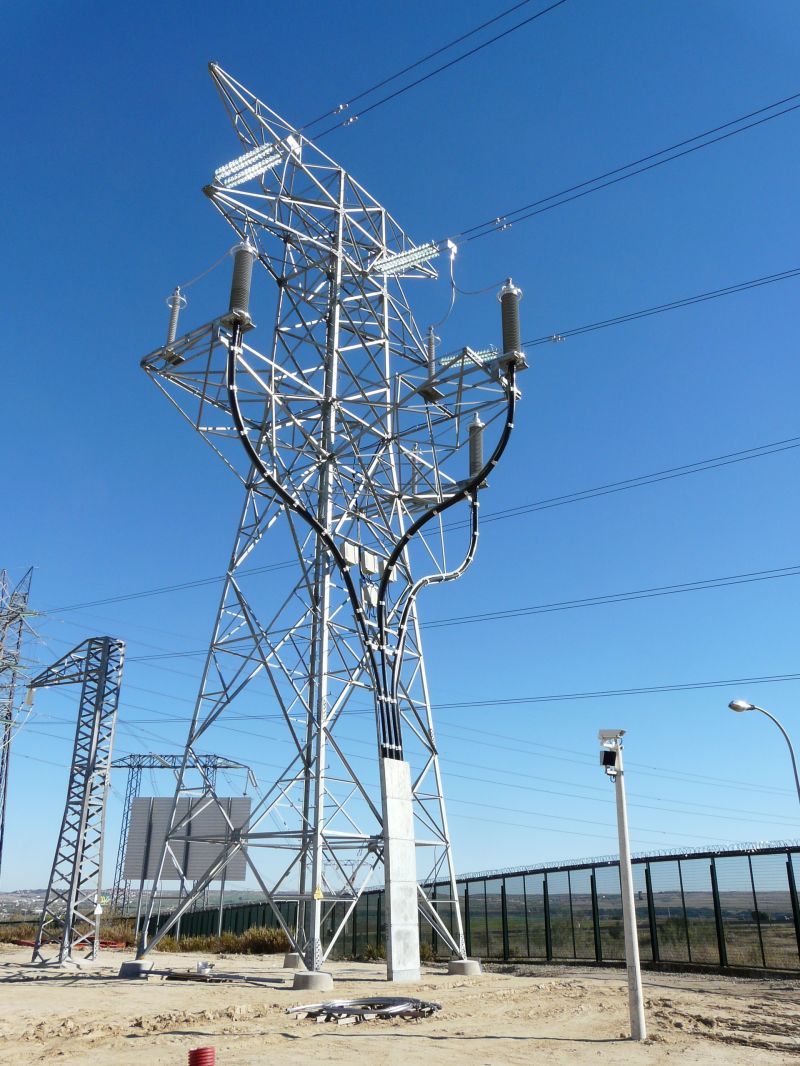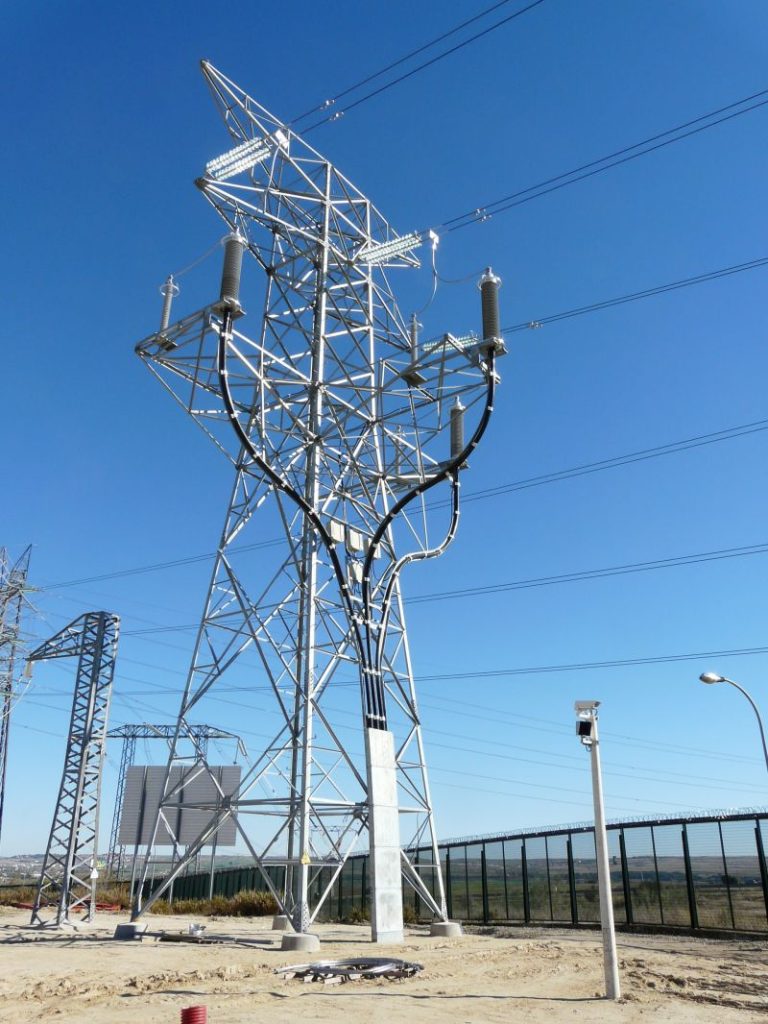
Mixed cable and overhead lines

In addition to cable and overhead lines, there are mixed lines when, for various reasons, part of the line route is made as an overhead line, and part as a cable one. At the junctions of cable and air sections, special “transition points” have to be equipped. There are a huge number of transitional point designs:
1️⃣ Open-type on the line tower (pylon, support).
2️⃣ Open-type on the ground.
3️⃣ Closed-type in the special building.
However, the most common in the world for classes up to 245 kV are transition points on the line tower – case No1. An example of such a tower is shown in the attached photo. Why tower on photo is a good example of transition point between cable and overhead line? There are several reasons for this:
✅ The cable terminations are placed vertically (this is better than at an angle, even if termination is of dry type with no oil inside).
✅ Metal-oxide surge arresters are installed at a distance from terminations and, if damaged (which happens), they are unlikely to damage the cable termination.
✅ Cables go down from terminations into the ground along special metal guides. This allows you to ensure that the bending radius of the cable is not less than the permissible value regulated by the cable manufacturer.
✅ Cables are securely fastened with a large number of clamps, which eliminates the movement of the cable in case of short-circuits and eliminates the sliding of the cable down the tower, that is important for cable termination reliability and tightness.
✅ The place of the cable exit from the ground is protected by a metal box that covers the cables to a height of up to 2.5 m. This is not only mechanical protection of cables from external factors, but also protection from a ground fire. The same protection effect couldn’t be achieved by use of polymer pipes (as a rule, they burn well).
✅ The boxes for grounding cable screens are located at a height, not at ground level. This reduces the risks of penetration by random persons and the risks of vandalism, theft of equipment.
✅ Video control is organized next to the tower.
What causes questions on this tower? There are some. For example, there are no lightning protection wires on the overhead line. Maybe designers of this tower consider this tower to be the same like common line tower – it’s not right, because transition tower is not a simple tower but a small switchgear. As a rule, in high voltage networks, near the switchgear, as is known, overhead lines connected to it are equipped with protection wires. Such wires allow you to reduce the number of lightning strikes to the overhead line phase wires, which means you can reduce the number of lightning waves that will travel from the line to the switchgear equipment and, in tower case, to cables. In addition, the absence of a grounding wires increases the energy that is released in the surge arresters, which means it increases the risk of arresters’ damage.
